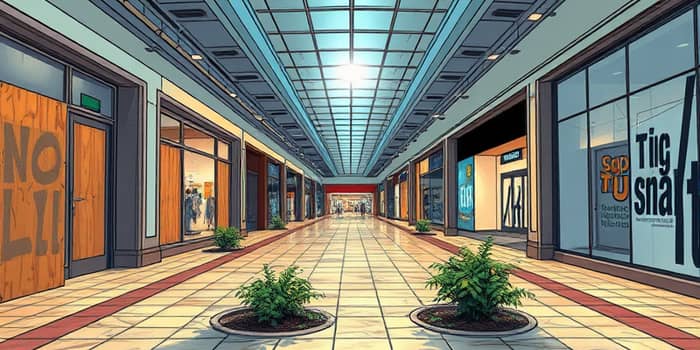
The U.S. retail landscape is undergoing seismic shifts as thousands of stores shutter their doors. What began as an uptick in closures has grown into a full-blown crisis, reshaping communities and challenging the very future of physical shopping.
In 2025, the so-called “retail apocalypse” accelerated significantly. Analysts predict that 15,000 retail stores will close this year—more than double the 7,325 closures recorded in 2024 and eclipsing the previous record set during the pandemic.
Retail bankruptcies reached record highs in 2024, a trend that shows no sign of abating. Chains once considered stalwart are now filing for bankruptcy protection, some for the second time within a few years, illustrating just how volatile the sector has become.
Major brands such as Macy’s, Joann Fabrics, and Party City headline this wave of failures. Macy’s plans to close 66 stores in 2025, aiming for 150 closures by 2026, while Joann Fabrics announced the shutdown of its entire 800-location network after repeat filings. Party City, following a second bankruptcy in two years, is shuttering every outlet.
Industry analysts point to a confluence of pressures eroding profitability at physical retailers. The most impactful include:
Each of these forces compounds the challenges faced by traditional stores, forcing many to reconsider their entire operating model.
The wave of closures has sent shockwaves through commercial real estate markets. As landlords confront vacant retail real estate, entire shopping districts can languish, dragging down foot traffic for adjacent businesses.
Local economies bear the brunt through widespread layoffs and diminished sales tax revenues. Suppliers and creditors face heightened uncertainty as they navigate the fallout of extensive distressed retail assets market trends.
In the United Kingdom, seven years of escalating distress culminated in 34 retailer failures in 2024, closing 7,537 stores and impacting nearly 56,000 jobs. Early 2025 has already seen nine more collapses, signaling that the crisis crosses the Atlantic.
The sustained wave of bankruptcies has given rise to a surge in legal proceedings involving creditor negotiations, lease disputes, and complex restructuring plans. Industry observers worldwide now warn that the retreat of private equity is limiting essential turnaround funding.
Repeat Chapter 11 filings have become increasingly common, highlighting the limitations of bankruptcy protection as a long-term solution. For many chains, the process simply delays the inevitable liquidation rather than powering a genuine revival.
Analysts have identified certain names and sectors that remain especially vulnerable in this tumultuous environment:
Credit rating agencies continue to track these brands, but the shrinking pool of rated entities masks deeper pockets of risk lurking beneath the surface.
Despite the daunting headwinds, some retailers are charting a course toward recovery by embracing innovation and flexible business models.
Best Buy and Walmart exemplify successful digital-physical hybrids, investing heavily in technology while optimizing in-store experiences. However, continual adaptation remains the key to long-term survival.
As the second half of 2025 unfolds, further industry consolidation appears inevitable. Distressed asset acquisitions may create a leaner landscape, with larger players absorbing select competitors and stabilizing vacancy rates in shopping centers.
Retailers that invest in rapid digital transformation and craft purpose-driven, community-focused experience centers will be best positioned to thrive. Meanwhile, landlords and suppliers must adopt flexible strategies to navigate ongoing volatility.
Ultimately, the current upheaval presents a chance to redefine brick-and-mortar retail for the digital era—transforming stores into hybrid hubs that blend social interaction, technological convenience, and curated discoveries.
References













